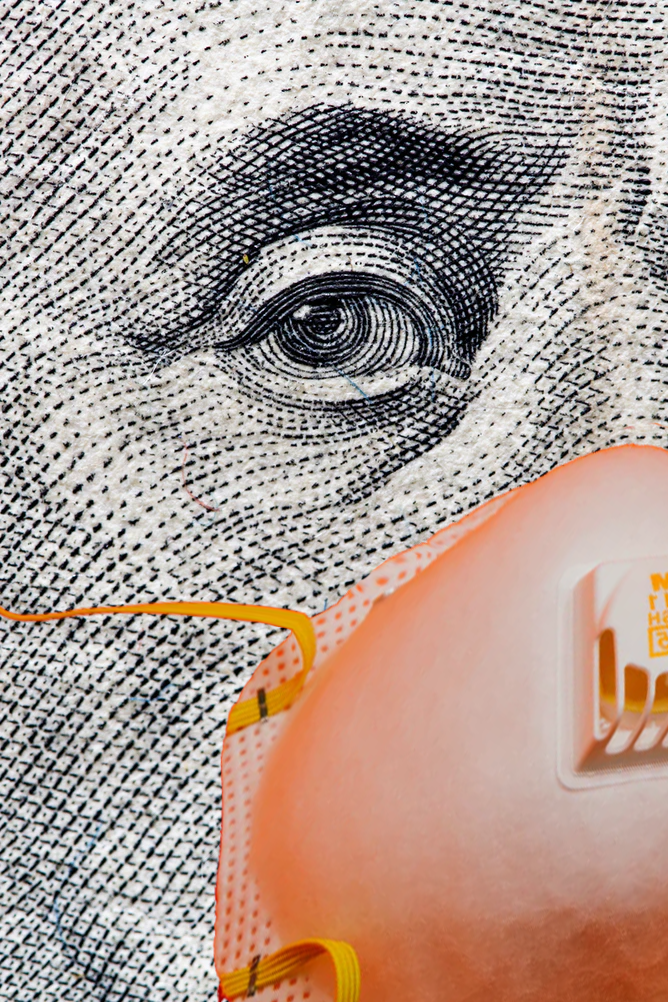
As millions of Americans have begun receiving their Economic Impact Payments via Direct Deposit, one may develop a feeling of ‘Deja vu’. While we have never seen a pandemic like this in our lifetime, the need for direct stimulus payments is something we have seen numerous times over the years, including as recently as 2008 and 2009. Are the current stimulus payments the same as those? What is different? Let’s take a look.
The biggest disparity between the 2020 Economic Impact Payments and those from 2008 and 2009 might just be the reason that necessitated them in the first place. The global pandemic caused by COVID-19 has wreaked havoc on the economy and led to the federal government passing the Coronavirus Aid, Relief and Economic Security (CARES) Act in late March. Part of the $2 trillion in the coronavirus relief package is being allocated towards direct stimulus payments. Additionally, the IRS has set up an information center on their website that includes numerous features including the ability to check your status, confirm your payment type and enter payment information for those who do not normally file taxes.
The amounts of the 2020 Economic Impact Payments are higher than those in 2008 were. According to the IRS website, this year individual or head of household filers will receive $1,200, while those married filing jointly will receive $2,400, and are eligible for an additional $500 per qualifying child. However, there are income limits associated with these payments:
- $75,000 for individuals
- $112,500 for head of household filers
- $150,000 for married couples filing joint returns
However, taxpayers will receive a reduced impact payment if their adjusted gross income is between:
- $75,000 and $99,000 if their filing status was single or married filing separately
- 112,500 and $136,500 for head of household
- $150,000 and $198,000 if their filing status was married filing jointly
The payment amount is reduced by $5 for each $100 above the $75,000/$112,500/$150,000 thresholds. Eligibility will be based on either 2019 or 2018 tax returns.
Additionally, retirees who are Social Security or Railroad Retirement recipients will receive payments. However, if you do not have a valid Social Security number, are a nonresident alien, or can be claimed as a dependent on someone else’s return, you are not eligible for a payment.
The IRS is attempting to distribute the payments as quickly as possible by using Direct Deposit Information on file. If the IRS lacks that information, they will mail a paper check. In a decision which delayed the distribution of payments, the Treasury Department ordered President Trump’s name to be printed on the paper checks, the first time a president’s name has appeared on an IRS payment. This includes a normal refund or any stimulus checks the government has sent in the past. As the president is not an authorized signer for legal disbursements by the U.S. Treasury, his name will instead appear in the memo line.
The timeline for when Americans will begin receiving their payments has been mired by delays. The CARES Act was passed on March 27th and payments started being received via direct deposit the weeks of April 8th and April 13th. However, paper checks may take longer; some may not receive their checks until September. The IRS is prioritizing the lowest-income Americans first, sending checks on April 24th to those with incomes of $10,000 or less. This will continue in $10,000 increments.
It is estimated that 145 million Americans are eligible for these Economic Impact Payments.
2009 Stimulus Checks and Rebates
In response to the recession in 2009, Congress passed the American Recovery and Reinvestment Act (ARRA), which allocated $14.2 billion in stimulus checks. The amount of these individual checks, $250, were nearly $1,000 less than the payments in 2020. Those who received these checks, estimated around 52 million individuals, consisted solely of recipients of certain federal programs; Social Security, Supplemental Security Income, Railroad Retirement Board, and the Department of Veterans Affairs.
However, other individuals received tax rebates, not stimulus checks, through the Making Work Pay tax credit, which accounted for half of individual tax cuts. These tax cuts began appearing in paychecks in June of 2009, with each employee having about 6% less withheld from their paychecks. Additionally, the average taxpayer received a tax cut of $400 per individual or $800 per family. This was done through a reduction of withholding tax, which confused some individuals as they were expecting stimulus checks like those that they saw with the “Bush Tax Cuts” in the early 2000s. However, there were income thresholds; individuals who earned between $6,450 and $75,000 (or between $12,900 and $150,000 for couples) could receive the maximum credit mentioned previously, but those who exceeded $95,000 ($190,000 for couples) received no credit at all.
2008 Stimulus Checks
In 2008, President George W. Bush signed the Economic Stimulus Act, which totaled $168 billion ($120 billion in stimulus checks). Taxes were eliminated on the first $6,000 of taxable income for individuals ($12,000 for couples), and a stimulus rebate check was mailed out to about 130 million Americans. Individuals received up to $600, married couples $1,200, and those with children received $300 per dependent. Additionally, 20 million retirees on Social Security and disabled veterans received a check; $300 each or $600 for couples if they earned at least $3,000 in benefits. However, those only on SSI did not receive any supplemental checks.
Impact
What will Americans do with their 2020 Economic Impact Payments? Let’s look at what happened in 2008 and 2009. For the 2008 stimulus checks, a survey found that only 20% who received checks actually spent them; meanwhile 32% allocated the funds towards their savings and the rest used the checks to pay off any debts they had. Studies have also found that those who spent their checks did so quickly, with a third spending most of it within a few weeks and another half spending it within 1-3 months.
The $14.2 billion in checks as part of the ARRA was much less than the $120 billion sent out in 2008, but the checks went out two months faster than those in 2008 did.
The 2009 rebates, as previously mentioned, were not sent in the form of checks and therefore many people did not realize they received a tax cut. This resulted in people not spending the extra money intended to help stimulate the economy due to the lack of physical stimulus checks that they were expecting.
While it may be too early to tell what the impact will be for the 2020 stimulus checks, early data does suggest that people are spending their money on necessities such as food, gas and bills. Time will tell if this trend continues and if any further direct stimulus payments are included in any future relief packages passed by Congress.
Latest News
Photo credit: iStock.com/Maha1450 In honor of Presidents’ Day, there is no better time than now to reflect on the significant legislative and executive achievements of our nation's leaders. Throughout the last nearly 250 years, each [...]
Photograph taken inside the state capitol of the spectacular 272-foot, 52 million-pound dome. On February 6, 2024, Pennsylvania Governor Josh Shapiro (D) delivered his 2024-25 Budget Address. Shapiro's 2024 budget aims to provide tangible benefits [...]
photo credit: iStock.com/designer491 According to the National Center for Education Statistics, “Property taxes contribute 30% or more of total public-school funding in 29 states.” However, using property tax income to fund public schools can be [...]
Film strip in perspective. 3D isometric film strip. Cinema Background. Template cinema festival or presentation with place for your text. Movie time and entertainment concept. Vector illustration The Georgia film tax credit was designed to [...]






Stay In Touch